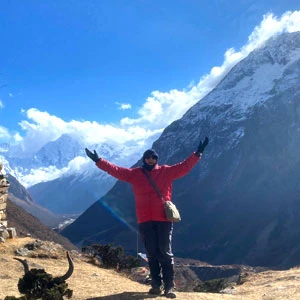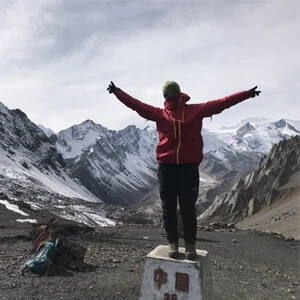Bardiya Jungle Safari
Bardiya National Park is located on the far western stretches of Nepal’s Terai, the lowland area of the country that encompasses a wide swathe of grasslands, wetlands, and jungles that border India and make up one of the most diverse and unique wildlife regions in Asia. Formerly a hunting reserve for the royal family, the park was established in 1988 and is still in such an unspoiled and pristine state relative to the number of annual visitors that it’s frequently described as "Chitwan thirty years ago."
Among the park’s many notable features is that it hosts a range of Asia’s most iconic mammals, such as the Bengal tiger, one-horned rhinoceros, and wild elephants, as well as being a bird-lovers' paradise with over 250 species found in the park, including the endangered Bengal florican and Sarus crane. Gharal and Marsh Mugger crocodiles, as well as Gangetic dolphins, are another attraction accessible via canoe trips in the park along the Geruwa River, the main waterway that runs through Bardiya.
There are ample opportunities for visitors to explore the vast wilderness of Bardiya, from jungle walks and canoeing to tiger tracking and birdwatching, a visit to the crocodile breeding center, Tharu cultural experiences, dolphin encounters, and of course an extensive jungle safari that offers up the opportunity to view the entire range of wildlife roaming the region—even the tigers if we’re lucky.
Bardiya is a considerable distance from Kathmandu and requires a return flight to Nepalgunj, with a further two hours required to reach the park by road. Once you’ve arrived at your accommodation, the hotel’s staff will give you the specific details for each day’s schedule according to your interests and length of stay. Our basic program is for a four-day/three-night stay, though if you wish, we can arrange for a longer visit. Simply contact Nepal Trekking Experts and let our staff discuss the options with you.
Moreover, you may take a look at our classic 3-night, 4-day Chitwan Jungle Safari package.
Flora And Fauna During Bardiya National Park Safari
Bardiya National Park is a treasure trove of diverse flora and fauna. Among the iconic species, the Bengal tiger is a major draw, and Bardiya offers one of the best chances in Nepal to spot this elusive predator in its natural habitat. Likewise, some of the other animals that you will encounter include one-horned rhinoceros, wild elephants, leopards, sloth bears, Gaur bison, and multiple deer species such as spotted deer, barking deer, and the rare swamp deer. Furthermore, you will also see langurs, rhesus macaques, and smooth-coated otters.
Likewise, Baardiya also has incredible avian diversity, with over 400 bird species recorded in the park. Among the most notable sightings are storks, great hornbills, white-rumped vultures, and the vibrant kingfishers. If you are lucky enough, you will also see rare species such as the Bengal florican and the giant hornbill. Furthermore, the park’s rivers and wetlands also host aquatic birds like ruddy shelducks, cormorants, and egrets. Apart from it, you may also stumble across migratory species during certain seasons, with birds flying in from as far as Siberia.
Now, Bardiya’s flora is equally remarkable. The park’s landscape is dominated by sal forests, covering over 70% of the area. There are also rare and medicinal plants such as kurilo (asparagus), harro, and barro. Similarly, the grasslands are lush with species like elephant grass while the river areas are home to fig, sissoo, and kapok trees.
Cultural And Local Experience In Bardiya
Tharu people has been living in Bardiya for centuries, hence, their culture is deeply rooted in their harmonious relationship with nature. They are known for their knowledge of local flora and fauna, which they use for medicinal and practical purposes. One of the highlights of visiting Bardiya is the opportunity to interact directly with the local Tharu communities.
You will get an opportunity to engage with the Tharu people in their daily lives. You will also get a chance to visit their homes, eat authentic meals, and hear stories passed down through generations. Additionally, as you explore the nearby Tharu villages, you will notice the traditional thatched-roof houses and dirt roads. Furthermore, you can also get to explore their local crafts like hand-woven textiles. If timed your tour right, you may be able to participate in community activities such as the famous Tharu dance, a celebratory dance performed during festivals.
Adventure And Activities During The Bardiya Safari Tour
During the Bardiya Jungle safari, you can immerse yourself in several adventure activities to maximize your chance of spotting rare wildlife. Here, the traditional jungle safaris, both on jeep and elephant, are at the heart of the experience. Jeep safaris take you deep into the dense forests and grasslands of Bardiya National Park, where you can observe a wide range of wildlife. As for the opportunity to ride an elephant, it offers a unique vantage point, enabling you to observe wildlife from above, while also giving you a chance to get close to these magnificent creatures. Riding on an elephant's back provides a more up-close encounter with the wildlife.
For a more intimate experience, you can also walk through the jungle with a knowledgeable guide. They will help you track animals and understand the intricacies of the park's ecosystem. With this nature walk, you can also engage in birdwatching.
Another highlight adventure would be canoeing along the Karnali River. As you glide along the serene waters, you have the opportunity to spot crocodiles basking in the sun on the riverbanks and rare species of aquatic birds such as the kingfisher and herons. The tranquil setting offers a different perspective of the park’s wildlife. It is also quite calm and scenic way to enjoy nature.
Best Time For Bardiya Jungle Tour
The most ideal months for wildlife sightings in Bardiya National Park are during the Autumn (September to November) and Spring (March to May) seasons. These months offer the most favorable weather conditions, with moderate temperatures, clear skies, and less rainfall, making it easier to explore the park and spot animals. During this period, the park's wildlife is more active, especially in the cooler early mornings and evenings.
In contrast, the Winter months (December to February) are cooler. While this season can be a bit chilly, it offers a peaceful experience for those who enjoy less crowded parks and clear, crisp air. The wildlife may be more elusive during this time as animals tend to stay deeper in the forest to conserve energy. However, birdwatchers will find this time to be quite rewarding, as many migratory bird species flock to the park, adding to its already impressive birdlife.
The Monsoon season (June to August) is the least favorable time to visit Bardiya, as the park experiences heavy rainfall, making some areas inaccessible. The rains also cause the jungle to thicken, which can make wildlife sightings more challenging.
Permit Required For Wildlife Safari In Bardiya
To visit the Bardiya National Park, you will need the Bardiya National Park Entry Permit. This permit will cost you NRs 1,500 per person per day and it is free for children below 10 years old. This permit is mandatory for anyone entering the park, whether for a jeep safari, canoe ride, or jungle walk. You can get this permit at the park's entrance or if you are traveling by a local agency, they can help you secure it beforehand. Also, the process for obtaining is quite straightforward and you will require your valid ID.
Why Bardiya Jungle Safari With Nepal Trekking Experts?
Nepal Trekking Experts ensures that your safari is filled with awe-inspiring wildlife encounters, cultural insights, and memories to last a lifetime. From the comfortable rides to and from the park to the full-board meals and cozy accommodations, every aspect of your safari is handled with the utmost care.
With our experienced guides, you get to explore Bardiya’s wilderness, uncovering its hidden treasures and natural wonders. Contact us today for a budget Bardiya Safari package that goes beyond the ordinary.
Furthermore, if you would also like to engage in more safari adventures, consider booking Chitwan Jungle Safari.
.webp)
.webp)


